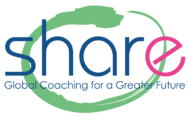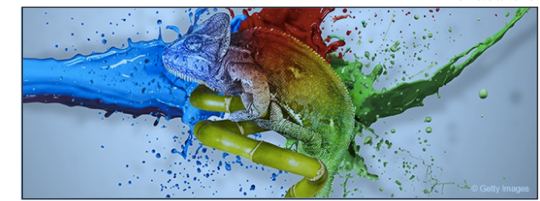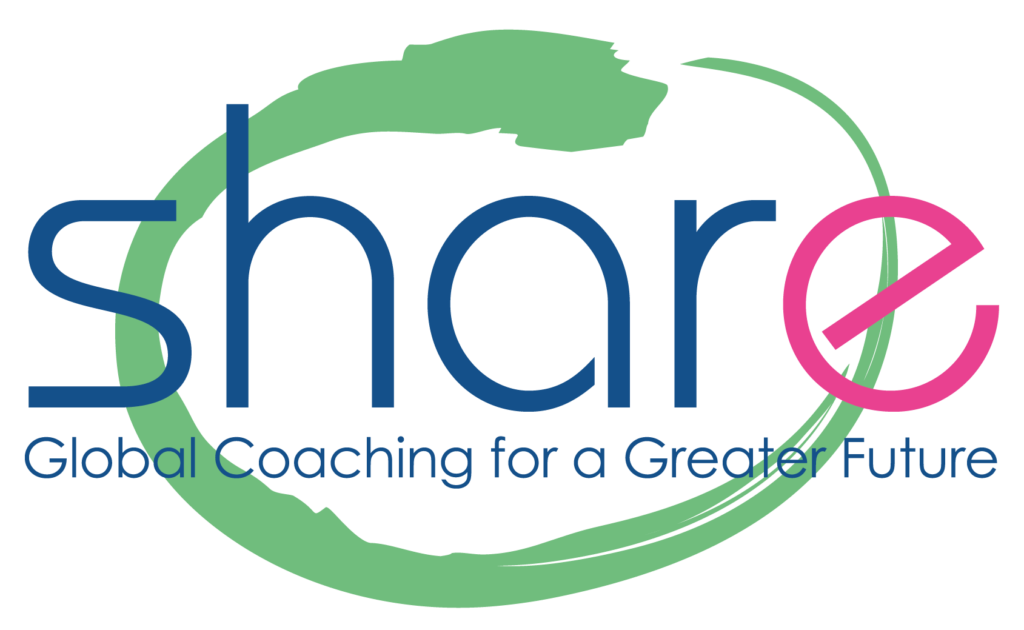The 2017 DDO Conference: Building a 21st Century Growth Culture
By Anna Gallotti & Catherine Tanneau, Master Certified Coaches, International Coach Federation
…from Employee Engagement to Employee Development
…from a “Great Place to Work” to a “Great Place to Grow”
​
 The 2017 DDO (Deliberately Developmental Culture) conference has just taken place in Boston (MT, USA). Organized by the authors of An Everyone Culture, Harvard Professors Bob Kegan and Lisa Lahey and the Way to Grow Inc. team[1]), this conference gathered more than 120 Professionals of Change (Leaders, Consultants and Coaches) from America and Europe. The co-authors of this article, Catherine Tanneau and Anna Gallotti[2] attended the conference.
The 2017 DDO (Deliberately Developmental Culture) conference has just taken place in Boston (MT, USA). Organized by the authors of An Everyone Culture, Harvard Professors Bob Kegan and Lisa Lahey and the Way to Grow Inc. team[1]), this conference gathered more than 120 Professionals of Change (Leaders, Consultants and Coaches) from America and Europe. The co-authors of this article, Catherine Tanneau and Anna Gallotti[2] attended the conference.
The program includes great moments of networking within a community of practitioners and many inside stories from senior executives and organizations that have already implemented a DDO: Decurion, WellMed, ENPro, among others.
The main topics of the two-day conferences were the following:
- How to create a Deliberately Developmental Culture that integrates performance and development for everyone
- Insights from organizations that have successfully begun creating their own Deliberately Developmental Cultures
- Key tools and approaches to create and sustain a Deliberately Developmental Culture and how to start building such culture
1. A 21st century Deliberately Developmental Culture: an « everyone culture »
There is a major shift between 20th and 21st Century culture at work:
[1] Andy Fleming, Matthew Miller, Deborah Helsing, Claire Lee, and Kaz Gozdz (Way to Grow Inc.)
[2] Catherine Tanneau and Anna Gallotti, two international Executive coaches, both Master Coach Certified from ICF and engaged in the worldwide transformation and growth of people and organizations
| 20th Century work culture | 21st Century work culture |
| Development meant targeting some happy few (the « high potentials ») | Deliberately Developmental Culture for EVERYONE EVERYDAY that embeds performance and development for everyone |
| Development was focused on moments of learning (coaching & off-site moments) | People learn at work together (with people they work with), all the time |
| People are “consumers” of development tools |
All employees are citizens rather than consumers |
According to Gary Hamel, author of the Future of Management “An Everyone Culture is the most provocative recasting of human and organizational potential since the advent of the learning organization.”
Why is it so crucial do have a Deliberately Developmental Culture now?
- Organizations face new global challenges
- In order to meet their results, they need to have a highly involved workforce
- They need to attract and retain talents who very often are “millennials” with different needs and expectations from the previous generations: they want to work for an engaged organization, they want to see their values respected and they want to be listened and considered
- The employment rate in the United Stated is exceptionally high, particularly in big cities; therefore, people do not hesitate to change their job and to look for companies that meet their expectations.
2. A way to measure the Deliberately Developmental Organization: the « Growth Culture Indicator »
Three measures:

|
Ready to do the test and see how you will rate your organization? Rate each item from 1(never) to 5 (always), rate it twice: 1/ current situation; 2/ Desired future Edge: Home: Groove: |
And Now? The questions to ask yourself are:
- What is the developmental structure that I need to put into place to develop my organization and my people?
- Am I ready to start with myself …?
A key factor for success relies on the fact that people who are leading change need to start doing their own developmental work, leaders’ self-reflection is part of the development path!
|
Homework: « High Growth exercise » Think of a moment of high growth in your life … 1. When did a high growth time occur in your life? 2. Why was such a time a moment of high growth? What circumstances or factors came into play? Which people served your growth? How so? 3. What were you able to see, think, feel, and/or do afterwards that you couldn’t do before? 4. What did this time of growth mean for you in your work and life? |
« The challenge is to make the interior exterior in order to develop both individuals and organization. We all have to deal with self-awareness: arrogance versus humbleness … and accept to start working on our backhand! » Robert Kegan
3. Insights from organizations that have implemented a DDO culture: how to move a traditional organization to a DDO?
The case studies exhibited during the workshop showed common insights, despite the fact that each company had chosen different ways of implementing DDO:
- A sense of purpose and the vision of a growth culture for everyone is key to getting started
- A very high ROI (return on Investment): high and sustainable financial growth since the implementation of DDO
- Every day and every moment is developmental
- Getting started: there is an opportunity to grow everywhere (top down, middle out or community based)
- Ability to experiment and improvise on how to develop: they had some principles as guidelines but they did not to know the next page. It’s is about mindset and behavior, which means having an adaptive work as opposed to technical work
- Psychological safety is necessary to create favorable conditions
- Feedback at every level is a great lever of personal and collective transformation
- Scalability relies on training internal facilitators and spreading the DDO at every level of the organization
- Tangible results: as level of trust and communication increased, performance increased
- Ongoing learning & nonstop adapting: “getting better at getting better”
We chose to highlight three case studies among the ones showcased during the workshop: Wellmed, Bridgewaters and Enpro.
I. The story of Wellmed (with George Rapier, Richard Meaning – Chris Arnold – Pamela Duffett – Otis Woodard)
Context
A healthcare company, focusing on seniors of seniors, 320 000 patients in Texas and Florida with the goal of changing the face of healthcare for senior people.
Process chosen and approach
Situational Workshops at every level, training internal facilitators and adopting a 5 components approach.
They built their approach on five key components, which fit WellMed culture:
- GOAL: know what you want to change, set your goal
- RESISTANCE: know why you have not changed: each team and each individual defined their Immunity to Change map, which is a technique to map the deep reasons why an individual or a team cannot put change into practice, even if they have the willingness to change. Self-awareness of these deep causes leads to overcome the resistances and put in place a sustainable and healthy change.[1]
- COLLECTIVE SUPPORT: give and receive group support. They put in place Situation Workshops twice a month, organized as follows: 8 people meeting with an external facilitator opening up and talking to each other in order to learn how to communicate more effectively. It takes from 9 months to one year to create the culture of vulnerability in a team.
- INDIVIDUAL SUPPORT: stay connected with a buddy, your Developmental Partner, to work on individual (’s) Immunity to Change Map and follow up after the Situational Workshops.
- SUSTAIN: Improvise; adapt continually. A web shared platform has been created to sustain the whole change process with the Immunity to Change map[2] online.
Results
After one year, 167 people were actively involved in the DDO process – 25 cohorts of Situation workshops – and nine facilitators were in training. In 2018, a new phase will start.
Safe space to increase vulnerability and the level of human connection has incredibly increased.

Their founder and CEO, George Rapier, a medical Doctor who used to have a directive leadership style, said: « Before DDO: I told my patients what to do as well as to my people. Now I totally reverse the way I function. I spend much more of my time in listening and not telling people what to do, that is something that is very effective. We had a very top down culture … I see our culture is improving: we are improving individually and as a corporation. The results are incredible, undeniable: the level of trust and communication increased. In the last two years, we were growing by the double of the size and we will continue to grow thanks to DDO. »
Factors of success
Some essential things that are needed to make this happen, together! Very challenging!
1. Psychological safety: it provides the kind of environment where you can be vulnerable, it’s the basis for DDO work, it creates candor, feedback.
- in order to explore we must be vulnerable
- In order to learn we must feel safe
- In order to test we need to experience
2. Candor and « healthy conflicts »: it allows to point out one another’s counterproductive behaviors.
- in order to see what we are missing we need the eyes of others
- In order to verify our assumptions, we need to be confronted by others
3. Leaders’ self-awareness: leaders have to understand that they are sometimes part of the problem. To quote one of them: “Sometimes I am not the solution: I am part of the problem”
Next Steps
- More training programs on personal development such as, defining emotions, psychological safety and candor.
- How to best shift from professional consultants to peer facilitation? This would ensure the scalability of the project as well as its sustainability.
[1] For more information, see the following article: http://share-coach.com/eng/articles.php?id=81&read=storia
[2] Immunity to change(ITC) map is a tool to measure resistances to change and understand their rootcauses. To know more about it see the book: « Immunity to change », Robert Kegan and Lisa Lahey –
II. The story of Bridgewaters
Context
Bridgewater consider themselves as incubators of development as a whole. They want to be developmental every day and in connection with everything. Bridgewater’s culture was based on:
– diagnosis, which helped uncover the root causes of each problem.
– tough feedback with the mindset “you have a problem, now you fix it”
Process chosen and approach
1. Each individual took the Immunity to Change Map online (which ensured scalability).
2. Global feedback process with a platform allowing to see different people’s points of view about the same person’s skill:
- All the feedbacks are given by visible people
- Feedbacks are based on specific pre-definite skills
- Feedbacks are in real time and lead to immediate change of processes and behaviors
- Everybody enrolls in this feedback process from the beginning, including the external consultants
Results
From a deliberately diagnostic organization to a Deliberately Developmental Organization.
From a culture of feedback and “fix your problem by yourself” to a culture of emerging awareness and change coming from individual awareness. “I don’t change because I have been told to do so, I change because the process allows me to become more aware of who I am”.
Factors of success
- The change didn’t come from the CEO but from middle management. They realized that the organization itself was run under the influence of big assumptions. The question was not only to develop a tool but also the conditions which would foster further development.
- The use of coaching to raise awareness and to develop people’s attitude versus “fix them”.
III. The story of EnPro and Helix (with Steve Macadam- CEO & President Enpro & President Hélix Group and Kaz Gozdz- DDO consultant)
Context
They set the three core values of the company: Safety, Excellence, Respect. Our starting question was “how can we unleash the potential of 6000 individuals?”
The ExCom started with a three-day camp meeting on the mountains where each individual was asked to meditate about one question: “what is my work?” Then they shared their answers for one day with in depth exchanges.
Process chosen and approach
1. Three Components of the change: Why? What? How?
- Why: we shifted the identity of people to the why. Many change programs fail because they focus on the How.
- What if we don’t change? We designed our organization as a learning organization.
- How will we generate purpose and values?
2. Leadership change: shift the leadership mindset to stage III – Servant Leaders – and stage IV – Self Renewing leaders – since the CEO is not at the center, they facilitate and serve a collective objective?
3. Authentic Community: self-leading small groups are organized within the company (as Situation Workshops). The group often starts by reading a story to get inspired, then people start talking about things that matters to them. They are not interrupted with questions, they just talk as long as they need (it) and then the next person starts talking and so on. Individuals become authentic, they exchange feedback. There is NO ROOM for JUDGEMENT (in the group), people just talk. There is no “buy in”, people find a solution by themselves. The leader cannot step in to fill the void by giving a solution.
4. Design a transformational map (in parallel with Authentic Community):
- 100 people gathered to talk about a manufacturing issue in order to shape a new system which could apply to huge engine(s) plants as well as small ones.
- My voice exercise: each person tells a 7-minute story in front of a group of 25 individuals. This creates a human connection. Furthermore, company leaders realized that, with regard to their employees, they projected a role which didn’t correspond to who they were as human beings.
Results
Sometimes it takes a long time to obtain results, but when it works Authentic Community groups solve real issues.
Factors of success
- Patience to move to an Authentic Community!
- Leaders’ behavior and mindset has to change: they need to let it go in order to build an authentic community
- Adapt all the time: “we beat the path as we walked it”
4. Lessons learnt and challenges in the process
These companies have experienced an incredible growth, but, more importantly, they put in place collective dynamics that enabled them to learn new lessons. Being a Deliberately Developmental Organization does not mean being 100% perfect in developing people. These organizations are not afraid to make mistakes and are confident that they will be able to correct them so as to continuously improve their development. They deliberately pay attention to their development and, when needed, they change roadmap to better serve this objective.
Here are the most important lessons learnt, as they perceived them and explained them to us:
- Everyone is a human being and deserves the same consideration and attention as everybody else
- Self-awareness is a journey.
- Develop the business in the meantime: they use business issues to encourage growth and learning opportunities.
- They don’t subordinate business objective to people’s development.
- Before reaching a solution, the organization needs to raise problems and “create chaos”.
- Accept the fact that some people are not ready for such a change.
- Accept the fact that not everybody is moving at the same speed.
- Accept the fact that we are imperfect human beings trying to become better.
- It is important to phase the project to ensure scalability. Scalability is possible when a web platform is implemented and when internal facilitators hold groups (Situation Workshop or Authentic Community)
- The best facilitators were not the persons who jumped into the project by reading the books and being enthusiastic, but rather those who resisted most at the beginning.
- Ability to improvise: the journey is not always pleasant and smooth. It’s good to be prepared for reality, which sometimes leads us away from our plans.
About us …
Anna Gallotti & Catherine Tanneau
Both are Master Certified Coaches (MCC), International Coach Federation, managers of Share Coach and Variations, two international coaching firms, partners for several years, that avail themselves of a network of over 40 coaches and managers throughout the world. For many years they have also contributed to the development of their profession: strong involvement in the International Coaching Federation, training of Professional Coaches worldwide (through the Activision Coaching Academy in Paris, New York and Shanghai), supervision and mentoring of coaches in three continents (Europe, America and Asia).

For more information:



